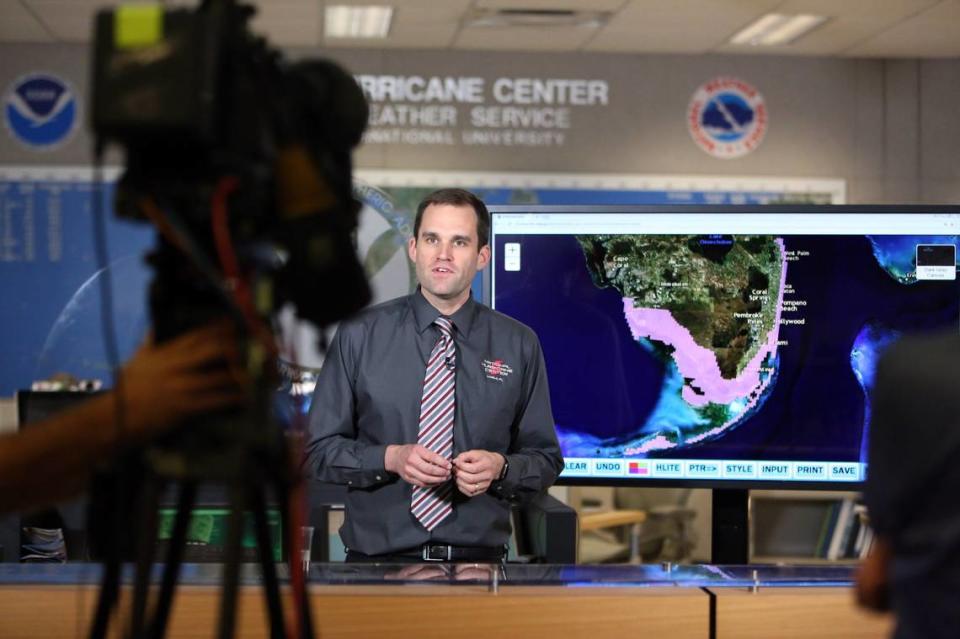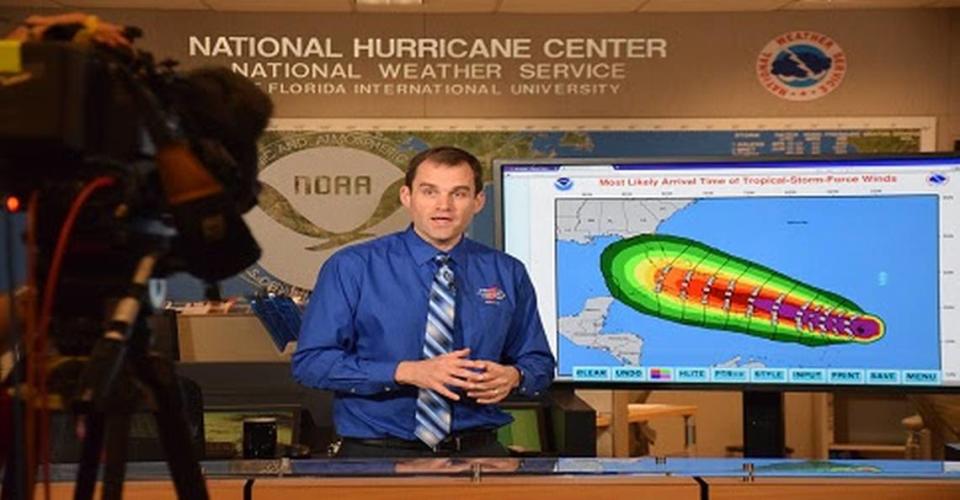NC State alum named new director of National Hurricane Center before storm season starts
The National Weather Service announced Monday that the National Hurricane Center has a new director, effective immediately. Mike Brennan, who has worked at the agency for 15 years, will be taking the reins at the Miami-based forecast agency, coming just over a month before the start of the 2023 Atlantic hurricane season.
The National Hurricane Center hasn’t had a permanent director since June of 2022, when then-director Ken Graham was tapped to lead the entire National Weather Service, which oversees the center.
Since Graham’s appointment, Jamie Rhome, a storm surge specialist with the Hurricane Center, has served as the agency’s acting director. He will now resume his previous role as deputy director, reporting to Brennan.
Brennan holds bachelor, master’s and PhD degrees in meteorology from North Carolina State University.
“Mike is a fantastic choice,” said Bryan Norcross, a hurricane specialist for FOX Weather and previously for The Weather Channel and television stations in Miami, in an email. “In my experience, he’s a natural leader who has earned respect from everybody he works with.”
Norcross added: “I should also say, Jamie Rhome did an outstanding job as Acting Director. He and Mike Brennan kept the NHC on track through the transition period and through the challenges of last hurricane season. Mike and Jamie as director and deputy will make an outstanding team going forward.”
Brennan will be the 14th formal director of the Hurricane Center since 1943. Bill Read, who led the agency between 2008 and 2012, spoke highly of Brennan’s qualifications.
“I selected Dr. Brennan to fill a senior Hurricane Specialist vacancy at NHC in 2008 or 2009,” he wrote via email. “By the time I retired I was convinced he would make a great NHC Director. He has the people skills necessary to be successful in the job.”
Brian McNoldy, a hurricane researcher at the University of Miami, echoed Read’s sentiment.
“I have known Mike for many years, and he already has had a long and productive career at NHC,” McNoldy said in an email. “His knowledge, experience and personality make him an excellent fit for the position; I have no doubt he will be a respected and capable leader of the Center.”
The National Hurricane Center led the nation — and the entire Atlantic Ocean basin — through a spate of seven consecutive above-average seasons that kicked off in 2016.
▪ The 2017 season featured back-to-back blows from Harvey, which brought historic flooding to Texas; Irma, which hit Florida at Category 4 strength; and Maria, which ravaged Puerto Rico and brought the collapse of the island’s power grid.
▪ In October 2018, Hurricane Michael slammed Florida’s big bend at Category 5 strength, marking the first storm of such strength to hit U.S. soil since Andrew in August of 1992.
▪ 2019 was another busy year, while 2020 bore witness to an unprecedented 30 named storms.
▪ Laura made landfall in Louisiana as a Category 4 in 2021, and Ian, which hit Florida last September, was recently found in postseason analysis to have attained Category 5 status over the southeastern Gulf of Mexico.
“The NHC director is one of the most visible and important jobs in the nation, and Mike possesses the right combination of experience, leadership and personal traits to prepare and guide us through major storms,” said Rick Spinrad, director of the National Oceanic and Atmospheric Administration, which oversees the Weather Service and the Hurricane Center, in a news release.
The upcoming hurricane season, which begins June 1, will be the first during which the Hurricane Center will begin releasing routine forecasts in the Atlantic on May 15 rather than June 1, reflecting a recent uptick in the number of May storms. Outlooks will also extend to seven days rather than five.
Private weather companies and academic research groups begin issuing Atlantic hurricane outlooks for the upcoming season this month. The prospect of an El Niño event by the fall, which tends to reduce Atlantic storm activity, could mean the first below normal hurricane season in many years. The National Weather Service’s hurricane seasonal outlook typically comes out in May.
The Hurricane Center evolved out of the need for specific forecasts of tropical cyclones in the early 20th century. The U.S. Weather Bureau in Washington, D.C., the precursor to today’s National Weather Service, assumed the responsibility for hurricane forecasts in 1902. Regional hurricane offices took over in 1935, one of which was located in Jacksonville. That office moved to Miami during World War II. It was collocated with the local National Weather Service forecast office, informally dubbed the National Hurricane Center in the 60s, and finally relocated to its own facility in 1978.
- - -
The Washington Post’s Jason Samenow contributed to this report.


